
 Skip to content
Skip to content
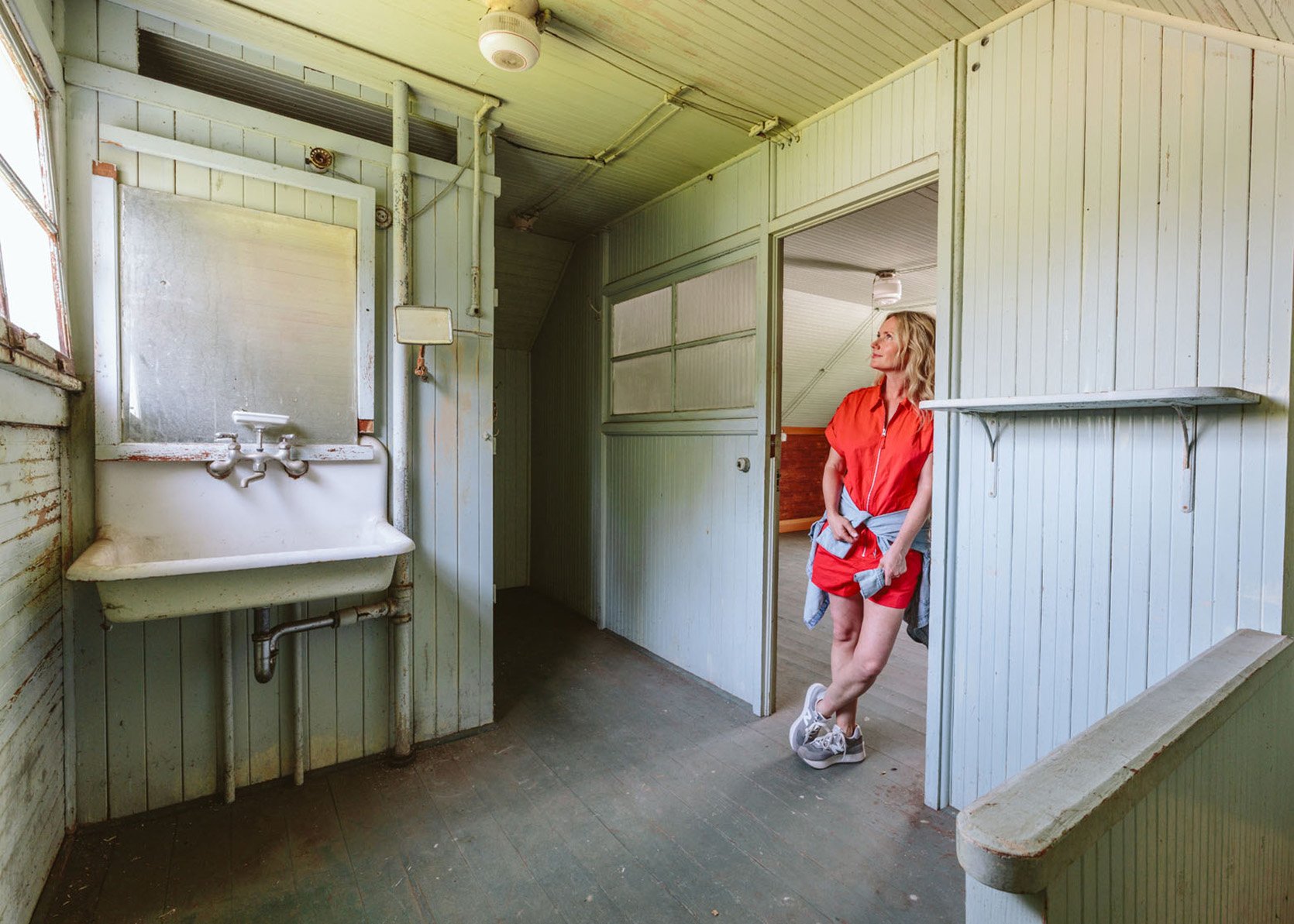
How Much Will It Cost To Remove Asbestos And Lead Paint From Our Guest Cottage (+ What I’m Willing To Do Myself To Save Money)
OK, lead and asbestos info coming at you – and before you click away, I know this stuff might sound boring, but it’s actually riveting because I can see all the dollars we are saving. I’m GIDDY. In past gut renovations, I would have just relied on our professional contractor to hire the experts to do the work needed, and listen, typical GCs don’t offer up budget or DIY ideas. You aren’t going to skimp on stuff like foundation or ask the homeowner to DIY asbestos (especially on a public project) because you have to guarantee the work long-term. ARCIFORM, for instance, is a high-end company, and for our huge renovation, they hired the best of the best in Portland, which meant the most expensive subs that guaranteed very high-quality work that lasts forever (but it sure did add up). That was great for this home (hard to swallow at times, but I’m grateful that it’s done right and in the past). Now, for the guest cottage, we just don’t want to spend money if we don’t really need to. And by project managing myself (no GC), I’m learning SO MUCH. I’m getting multiple quotes and asking the experts what they would recommend we try to tackle ourselves versus hiring out. I was surprised by what the answers were re lead paint and asbestos, and today I’m sharing.
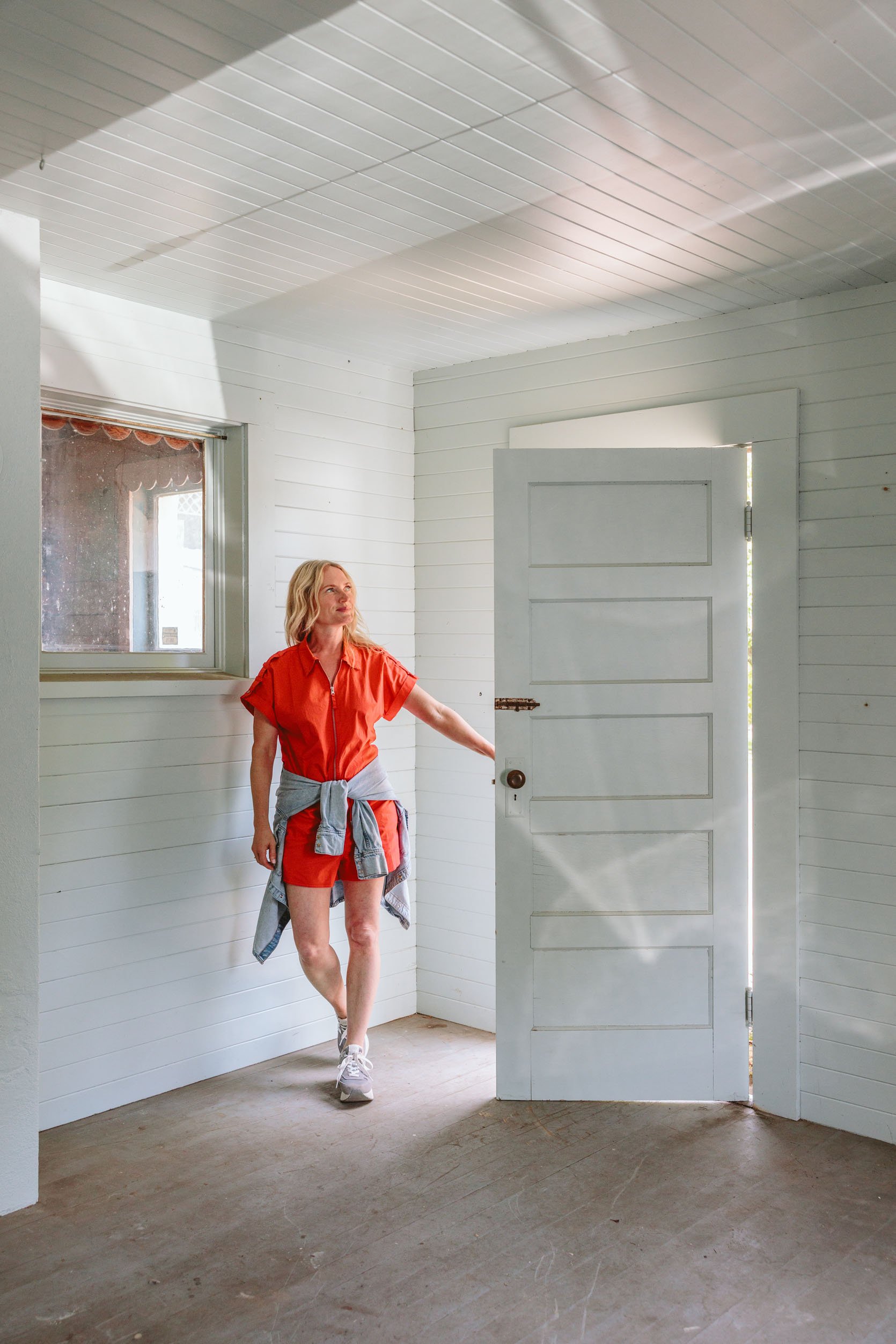
Now I feel compelled to give the disclaimer that obviously I am not an expert in toxic home substances, and the internet might recommend you not do these things yourself (what we are DIY-ing is legal, btw). And yet, all the subs that toured our guest cottage gave us the exact same advice on where we could easily save by doing it ourselves and would be just as good/safe as if they did it. So this is all anecdotal, and I’m taking no legal responsibility because I’m not giving ANY advice here, just telling you what I learned and what we are thinking about doing.
Asbestos – How Much We Have And How Much It’s Going To Cost
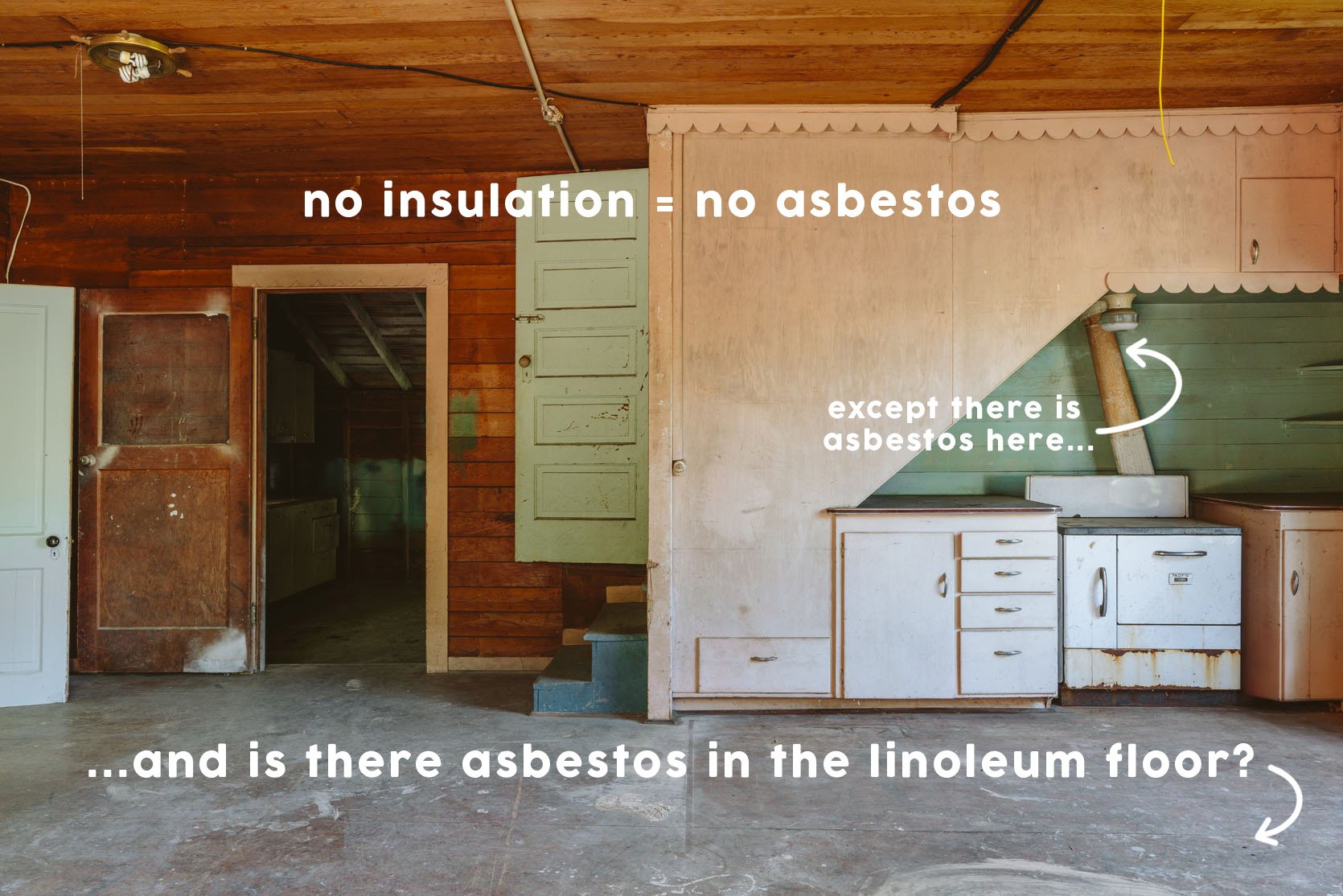
The good news was that our house is so old that there is no insulation, which is usually where there is A TON of asbestos. Our inspection report indicated that there might be asbestos in the linoleum floor (which is over the original wood we want to refinish in the main room) as well as the ducting near the stove (around 12 feet). So it’s pretty minimal. But still, I would never have considered doing asbestos abatement myself (keep reading). I had 3 abatement companies come, inspect, and submit quotes.
Company A – John
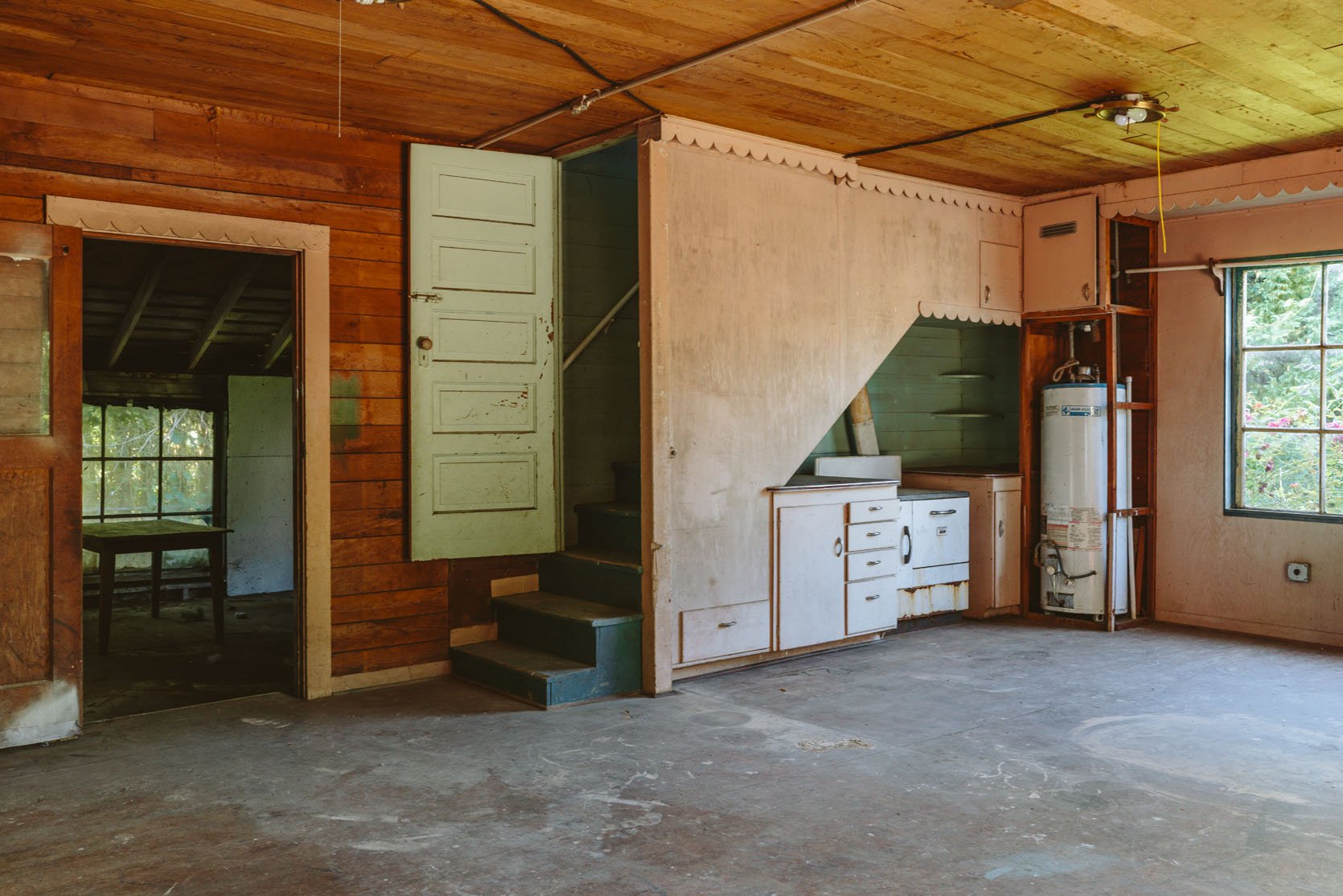
The first company came in at $7,130. Around $4k to remove the asbestos in the flooring and $2,250 for the ducting, then with a bunch of prep and legal fees. I didn’t love this quote, obviously, but having never done this before, I didn’t know if it was market rate or not. Thank goodness I continued to get quotes.
Company B – Leon
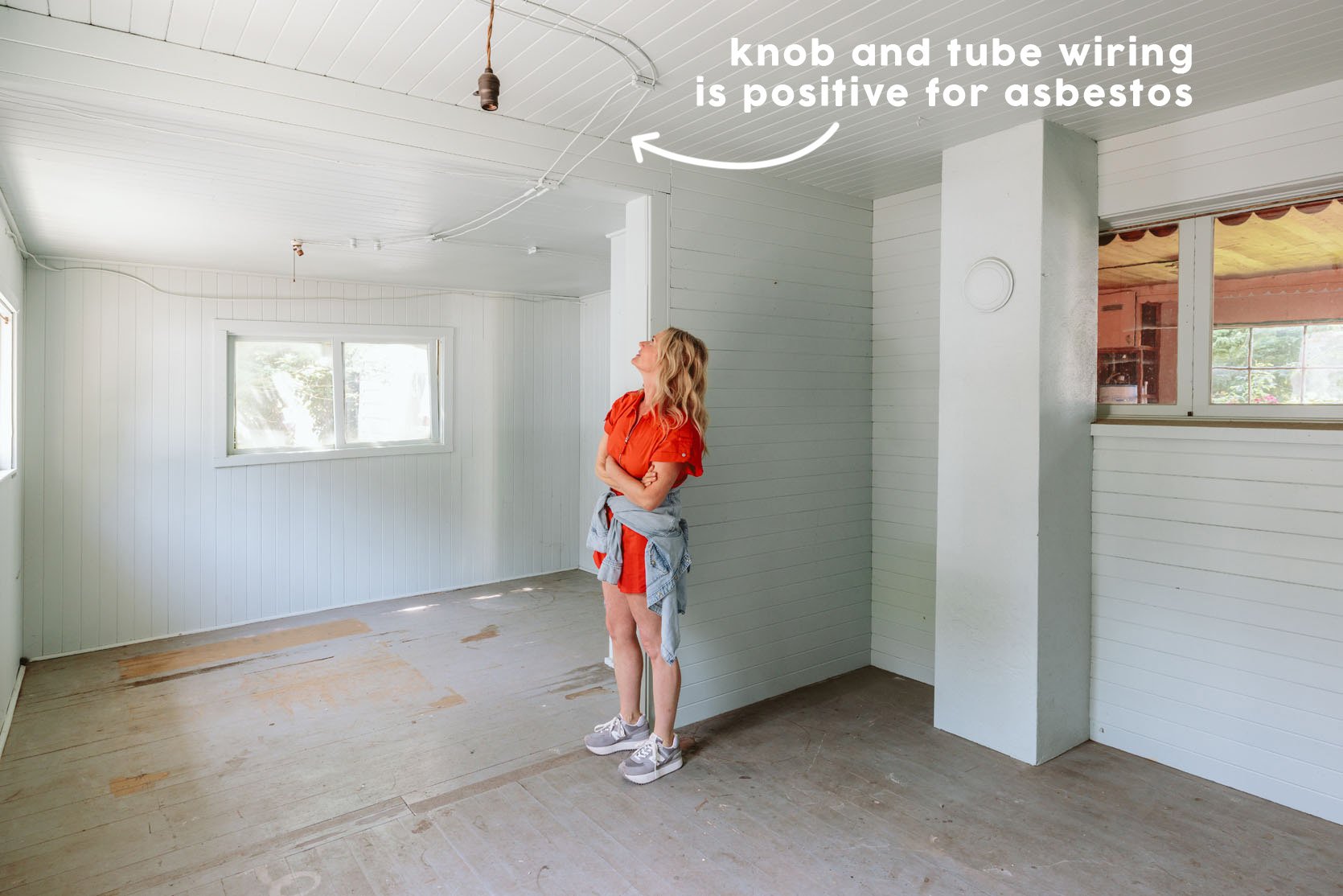
This company asked us if we wanted to test for asbestos and levels of lead, which cost $450 in lab tests (we didn’t know the cost when I agreed, whoops). While that does seem like a lot, he recommended it because he wasn’t convinced it was underneath the linoleum. Turns out the floor came back NEGATIVE FOR ASBESTOS!!! INCREDIBLE. His cost for removing it in the ducting was only $995! He did, however, say that there was asbestos around all the knob and tube wiring, which would cost $1,595 for him to remove. But he was very clear that we could do this ourselves and that most people don’t hire out for this (more on that below). But if we just did the ducting, it would be $995.
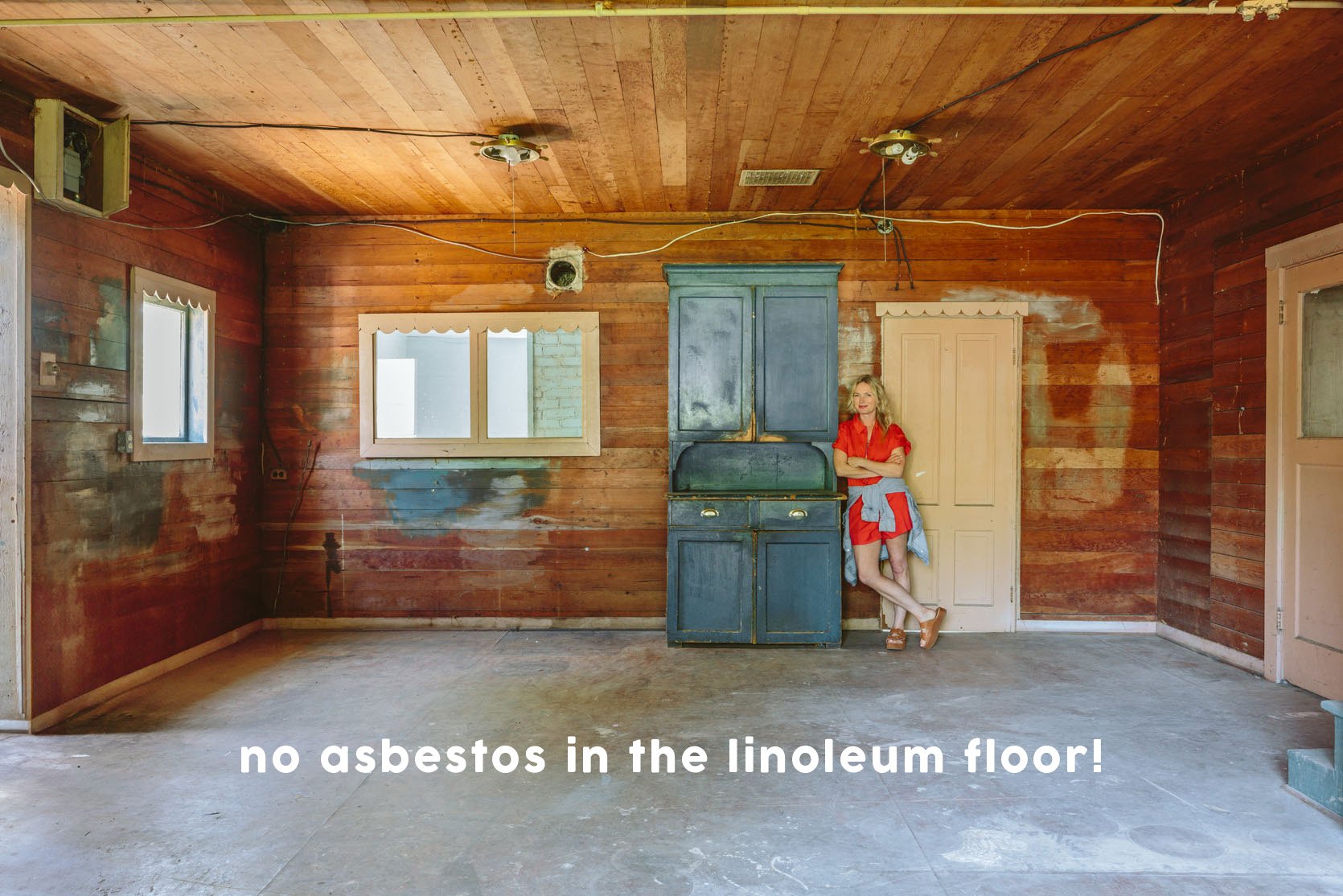
Company C – Barry
At this point, knowing that the flooring wasn’t asbestos, I had Barry only quote for the ducting. They came back at $1,782 for the same job as Leon (although Leon charged $450 in lab fees, and I’m assuming they make some money off of that).
Our Decision For Asbestos Abatement And What We Are Going To DIY Ourselves
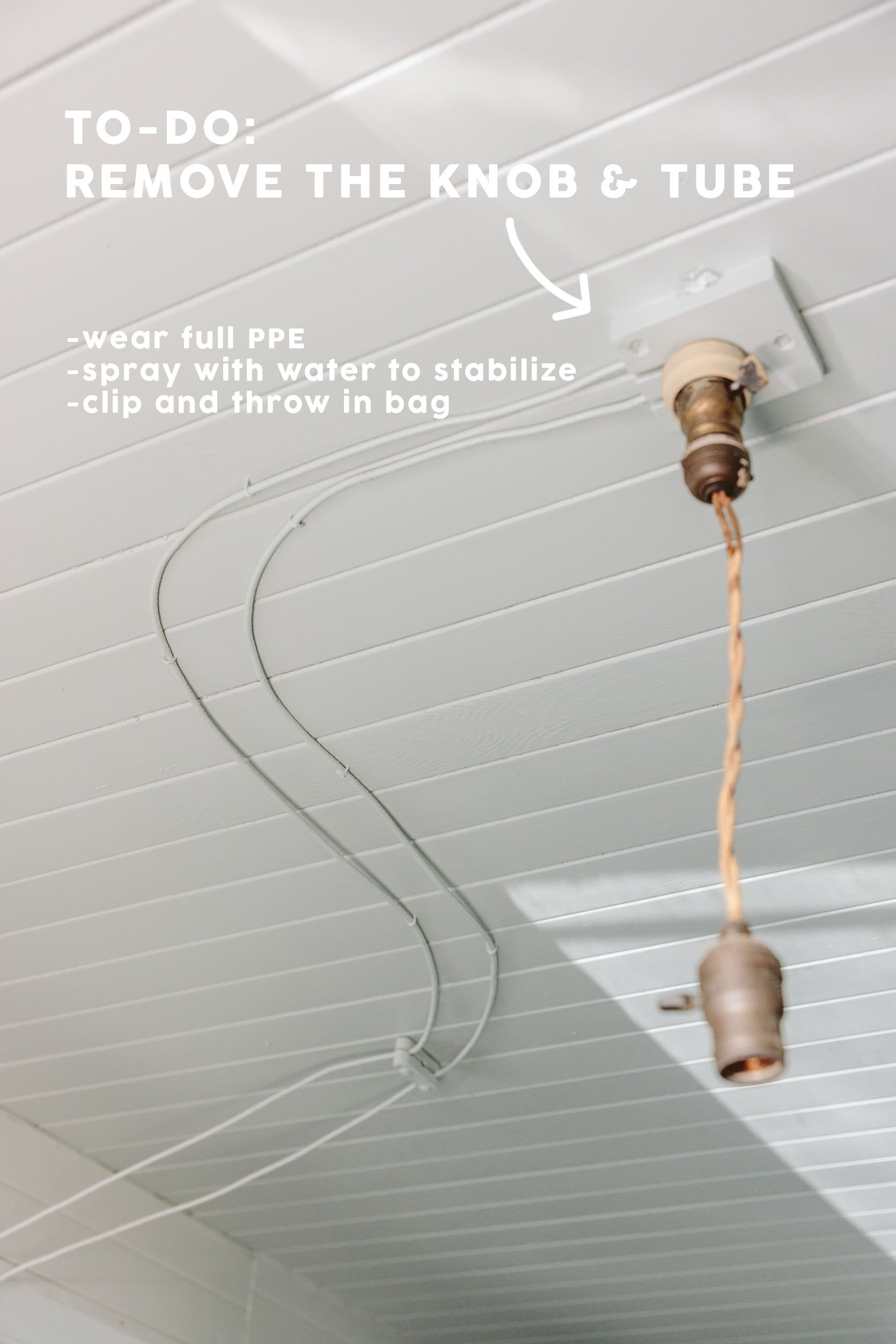
I think it’s pretty clear that we went with Leon, company B, at $995 (having already spent $450 on the testing labs), and then he walked me through how to safely get rid of the knob and tube that has encapsulated asbestos around it, so that we could save that $1,595. He said to gear up in full PPE (hazmat suit, mask, etc), spray water on it with a spray bottle to stabilize it (and reduce the chance of loose fibers/particles), clip it with clippers, and throw it in a bag. Now, I need to look into where I legally dump this, but he said it was very much DIY-able, and most people do this themselves.
Now Onto Lead Paint
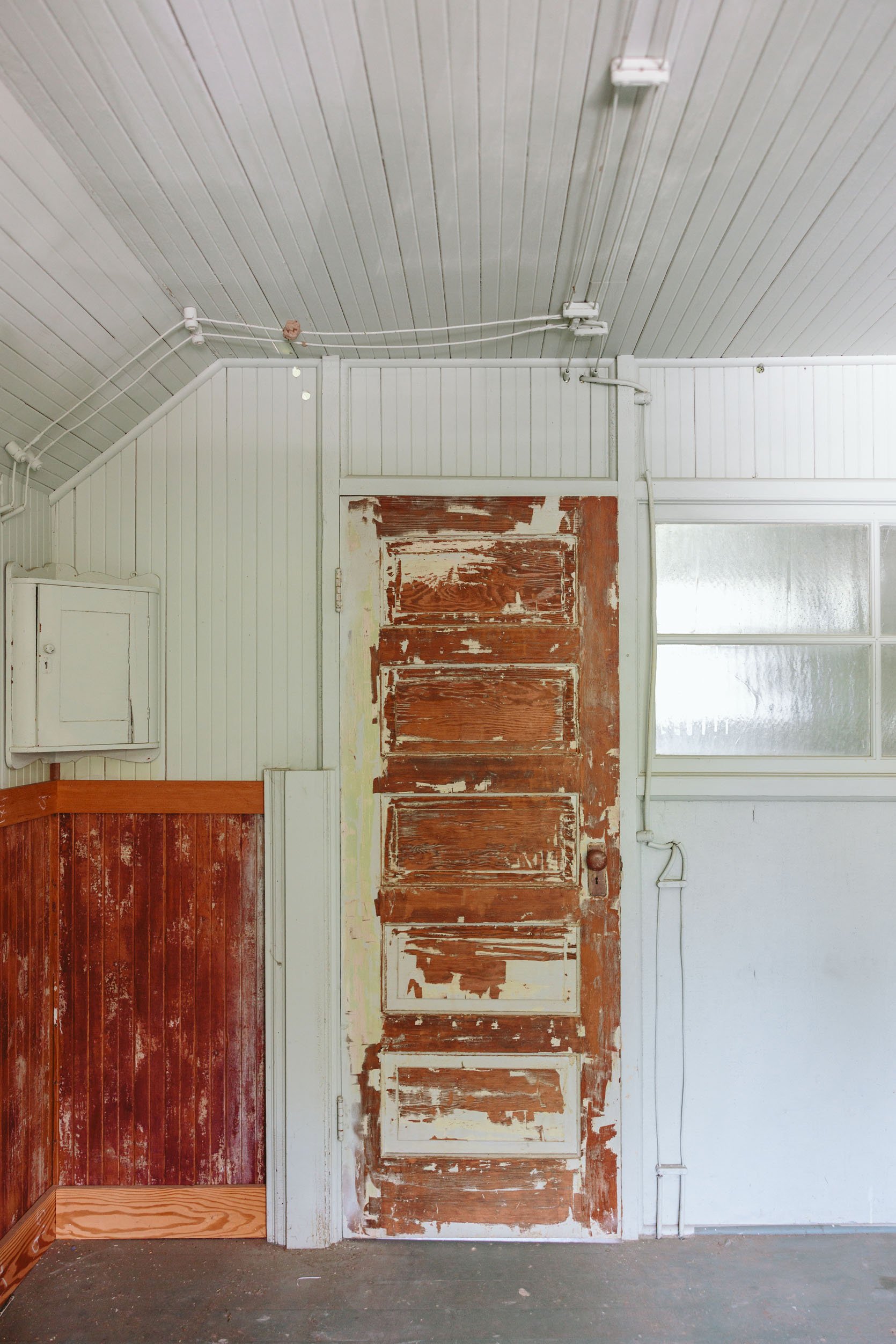
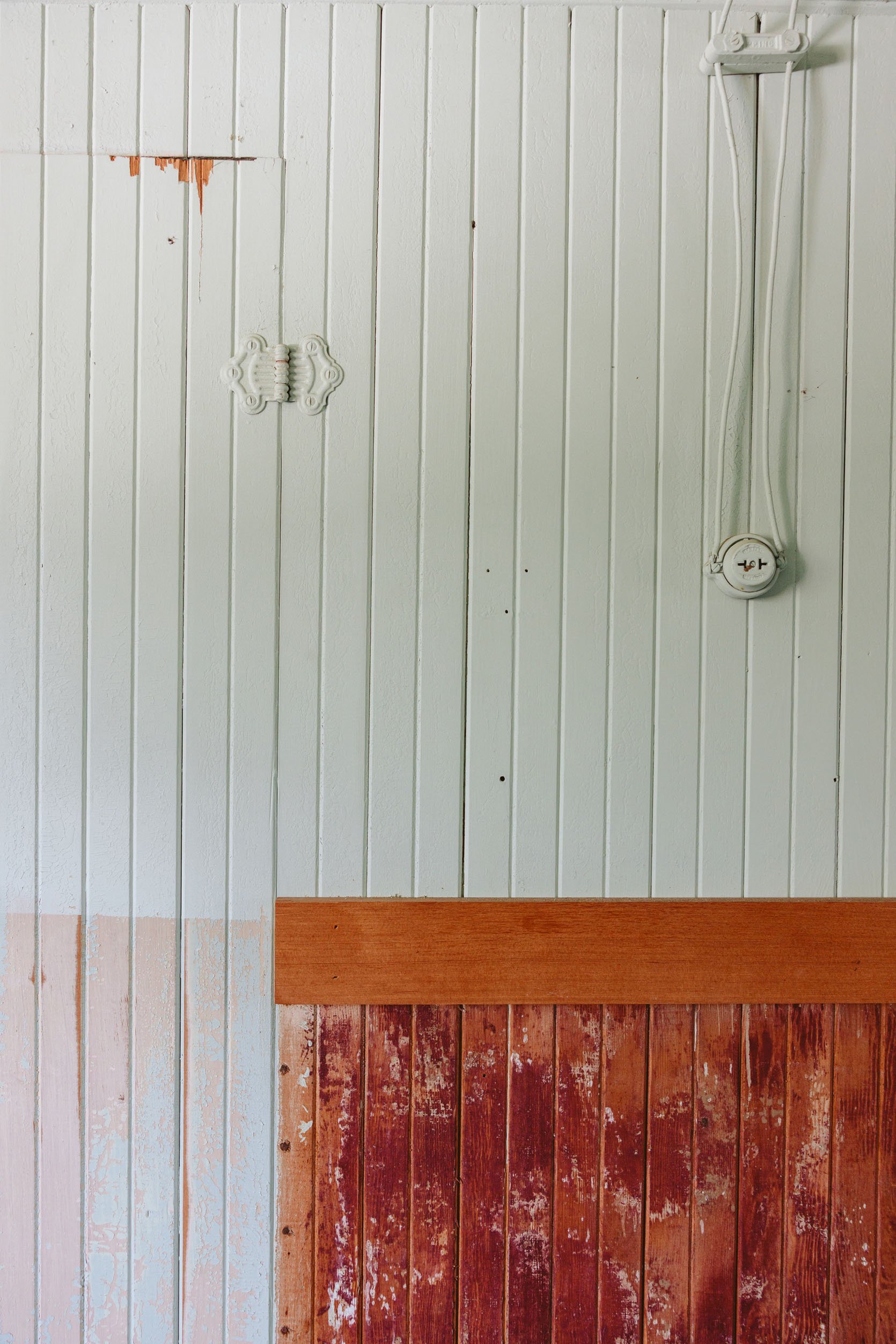
A fascinating and frightening historical fact about lead paint, which is no joke. Banned in the late 70s, most paint before then had a decent amount of lead in it (which made it durable), but lead is lead; it’s toxic in every form. But I guess that the reason they even realized that it can be so poisonous specifically for kids’ brain development is because kids were gnawing on window sills and eating the chipped paint from window sills off the floor, because lead paint is oddly sweet. WHAT???? But most houses built before the 1970s have lead paint likely underneath fresher paint, but it’s universally accepted that it’s only dangerous if it’s “disturbed” (i.e. flaking off), consumed directly by breathing in dust, eating flakes of it, or in water/soil (which is why you don’t sand blast it off – it actually makes it much more dangerous). Again, I’m not giving advice here, just passing on my research (which involves both deep internet and asking like 6 contractors/experts I know with a lot of knowledge and experience). We are safely and legally abating it, don’t worry.
Where Is The Lead?
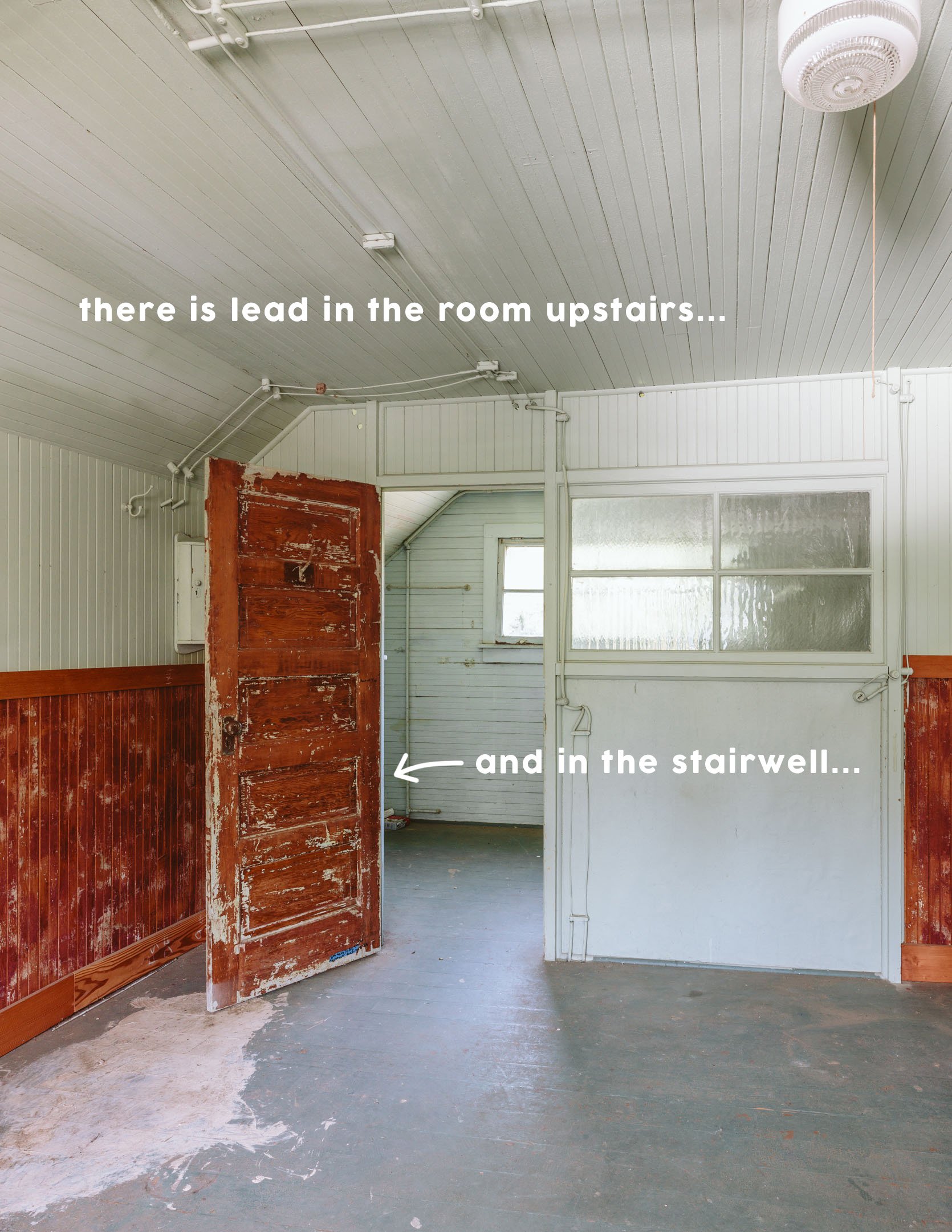
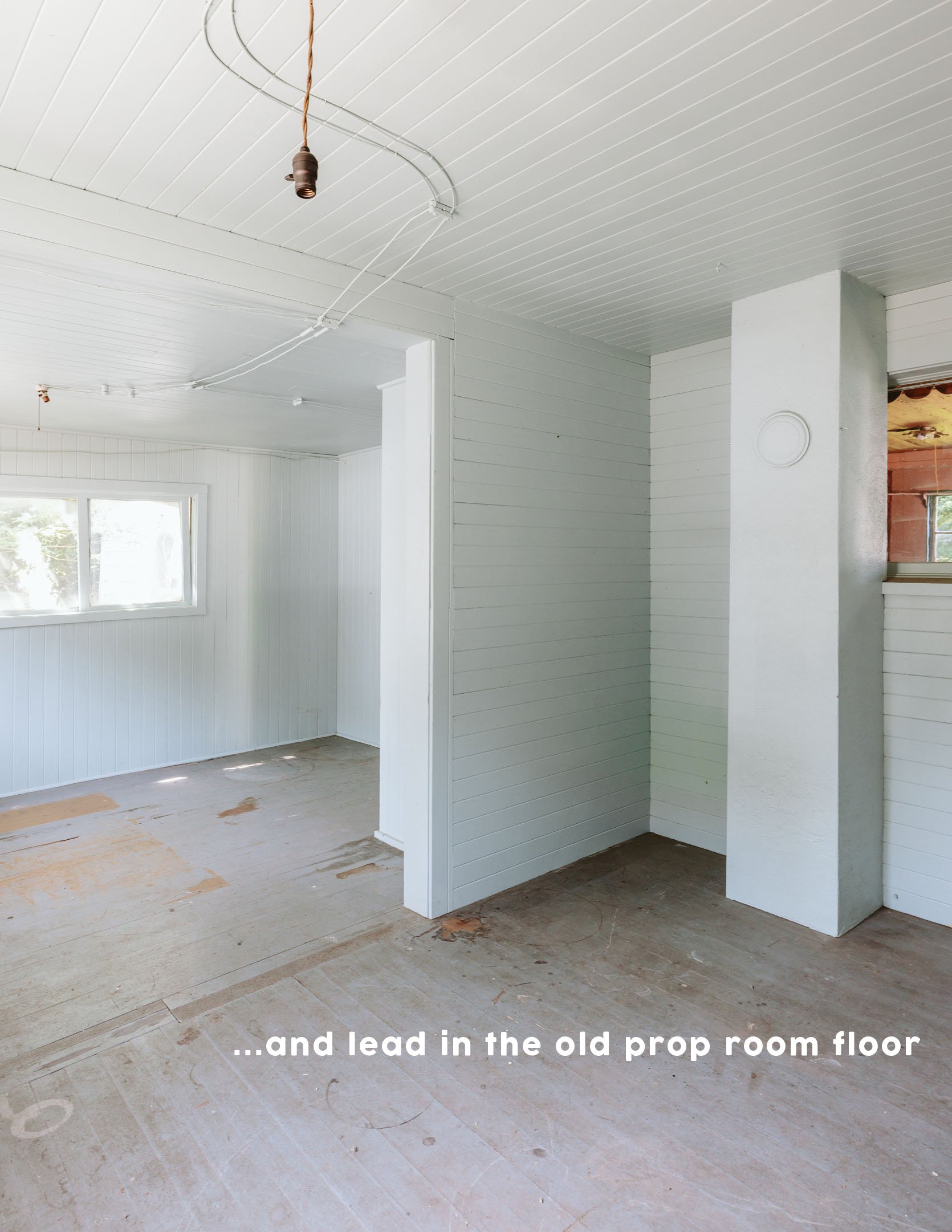
The good news is that we don’t have very much paint in the house. Most of the rooms are paneled with wood or just have open beams. So it’s mostly the stairs and the room upstairs (and the floor of the prop room). If it were on a bunch of old gross drywall, we might remove it all and just replace it, but since it’s all on good wood paneling, we aren’t demo-ing it out.
First And Only Quote For Lead Paint Abatement
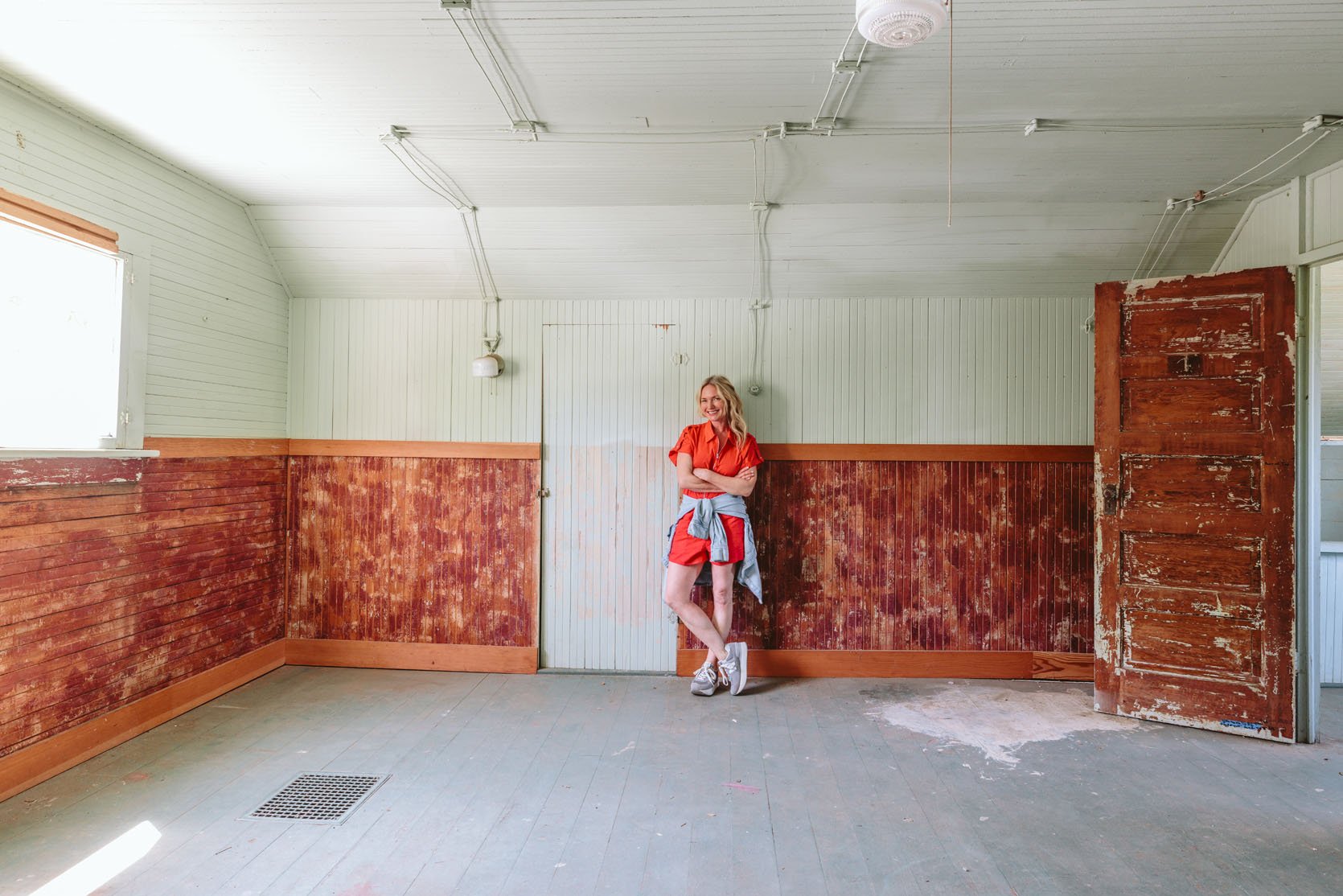
Company B (The same as above, Leon) gave me interesting insight. He said that sometimes in these really old homes, they couldn’t afford lead paint (it was the fancier, more durable paint back then), and there was a chance that there wasn’t enough lead in the paint to even worry about. He tested it at a lab (that was included in the same $450 fee, above), and it came back to have twice as much that is legal, which isn’t that much, actually (the legal amount is 5000 ppm, ours had 10k ppm – parts per million). It’s pretty minimal. He also reminded me of what the internet told me – that lead is really only dangerous if consumed directly by breathing in dust, flakes, or eating it. Leon said we could totally do this ourselves, but gave me the quote anyway. He quoted $4,495 to stabilize and prime over all the lead paint.
I asked Leon multiple times how he would do it versus a normal DIY homeowner, and he said the process was the EXACT same. You gear up in PPE, then “stabilize” it by scraping off any loose paint, perhaps sanding with a block sander, then prime over it to encapsulate it. So we’d be doing the exact same process; he’d obviously be faster at it, but it’s not a highly skilled job nor requires fancy tools. He honestly just thought we should do it ourselves and save the $4,495. I agreed with Leon 🙂
Total Cost If We Hired Out For Lead And Asbestos
If we had hired the first asbestos removal guy ($7,130), added on the knob and tube asbestos removal (which he didn’t quote for but Leon did at $1,595), and then hired out to remove the lead paint ($4,495) plus the $450 testing fee, we’d be at a whopping $13,670.
Total Cost We Are Paying
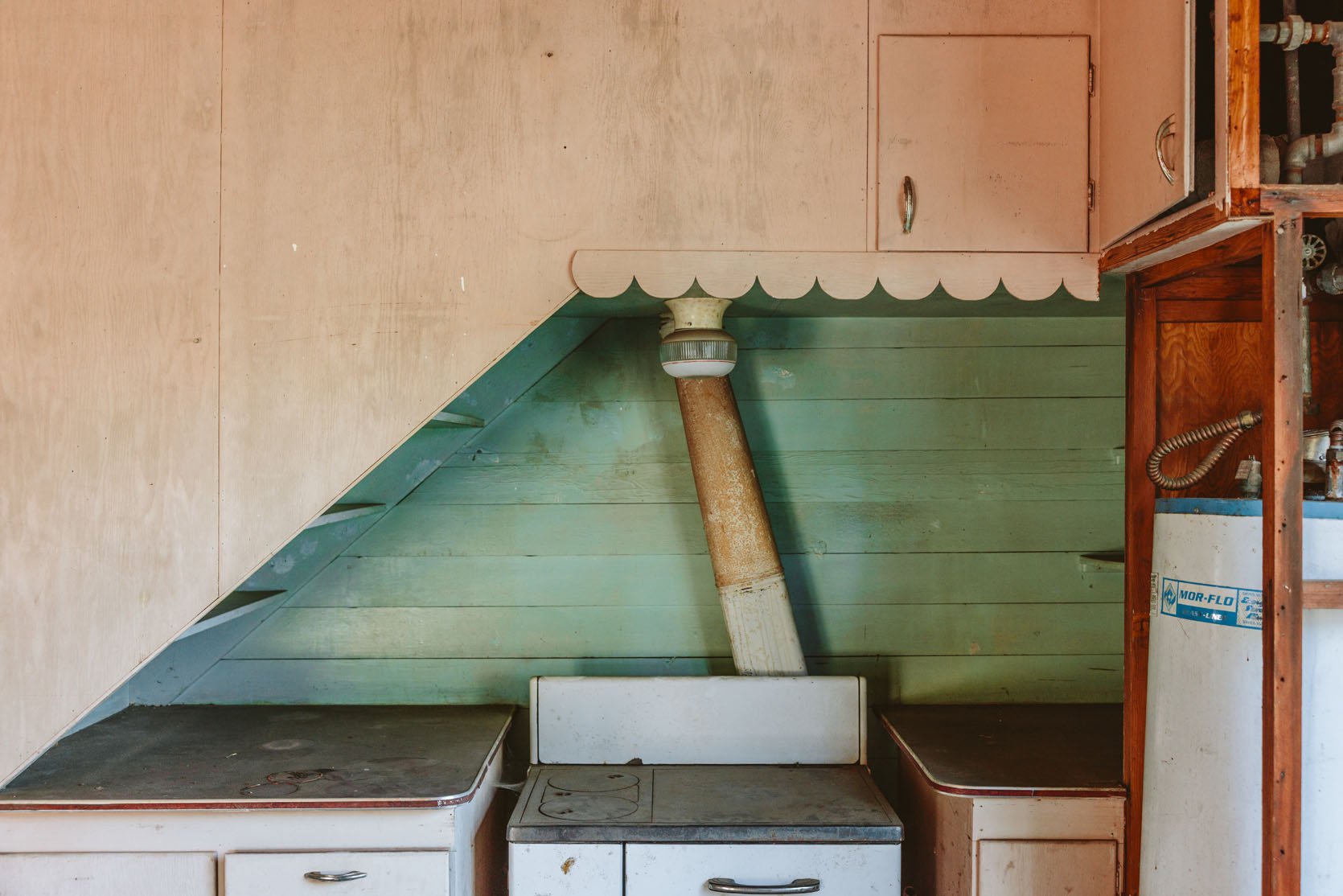
We are only hiring Leon to remove the ducting asbestos for $995 + the already-spent lab fee = $1,445. We will (safely) be doing the lead paint stabilizing and the knob and tube abatement on our own, and we are so glad that we got multiple quotes instead of just hiring the first company who assumed the flooring had asbestos without testing. Now, of course, there will be some purchases of supplies (PPE, spray bottle, scrapers, primer, etc), but pretty minimal, we hope. Also, this isn’t something I’m going to let my team help me with just because I feel a little weird subjecting them to known toxic materials, even if we are safe with PPE. So they’ll help film an intro and set up a time-lapse then take off (I mean, it’s pretty boring stuff to film anyway).
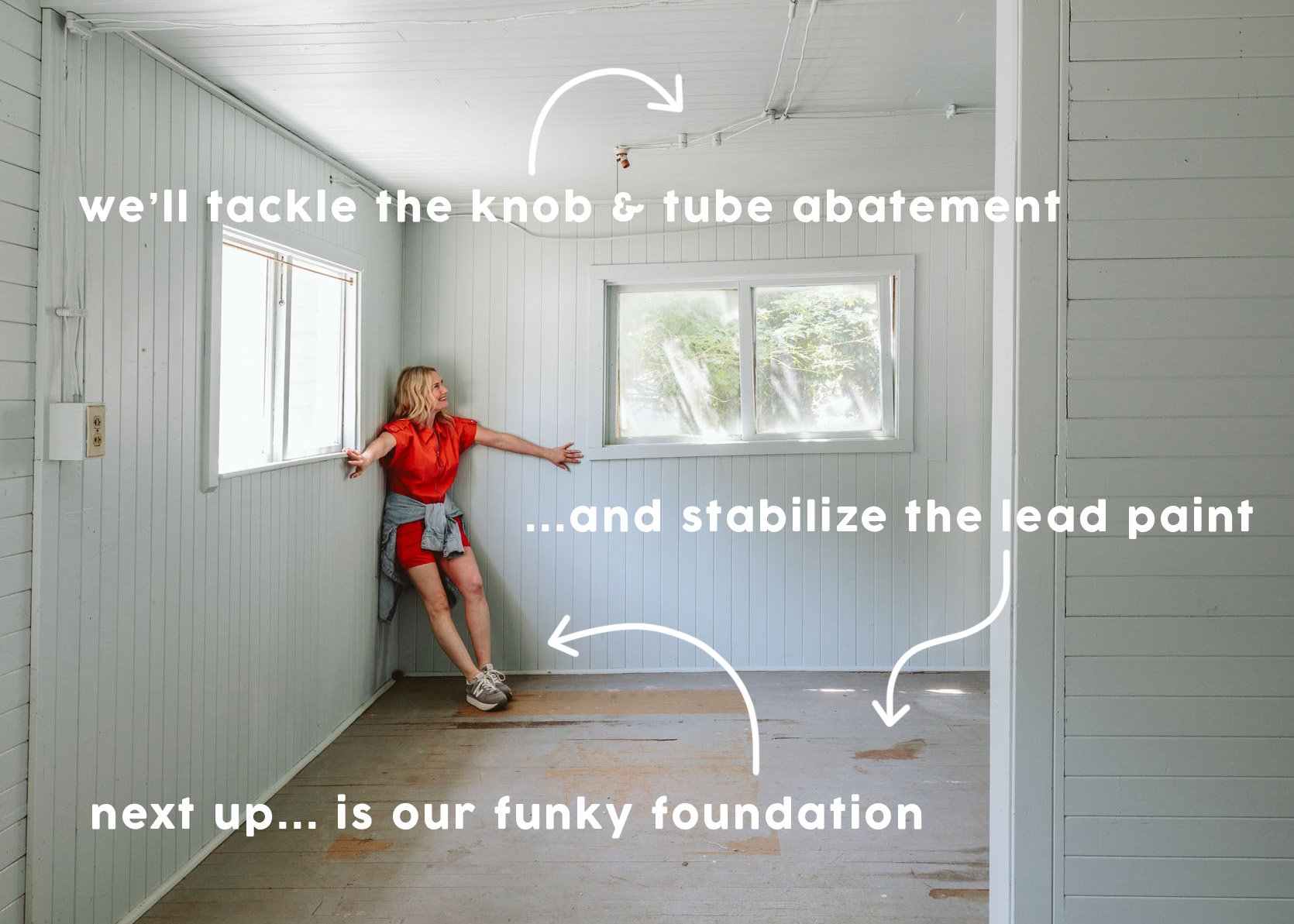
Next up are the foundation quotes, which are coming back with some pretty good news, THANK GOD. I’m waiting on one more before comparing them all and showing you what we are doing.
If anyone has experience doing either of these projects themselves and can give any tips, let me know in the comments!
*Photo by Kaitlin Green

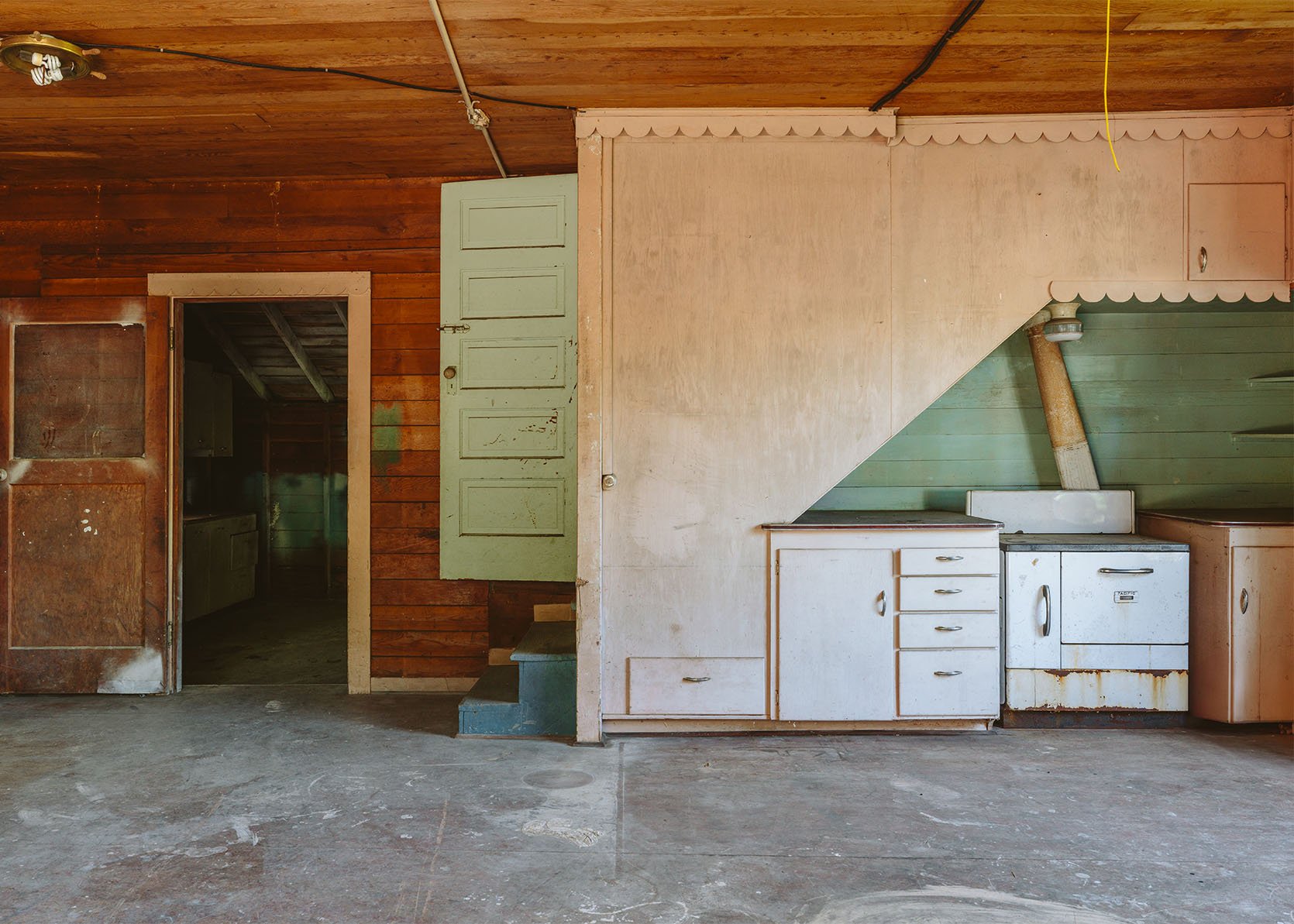
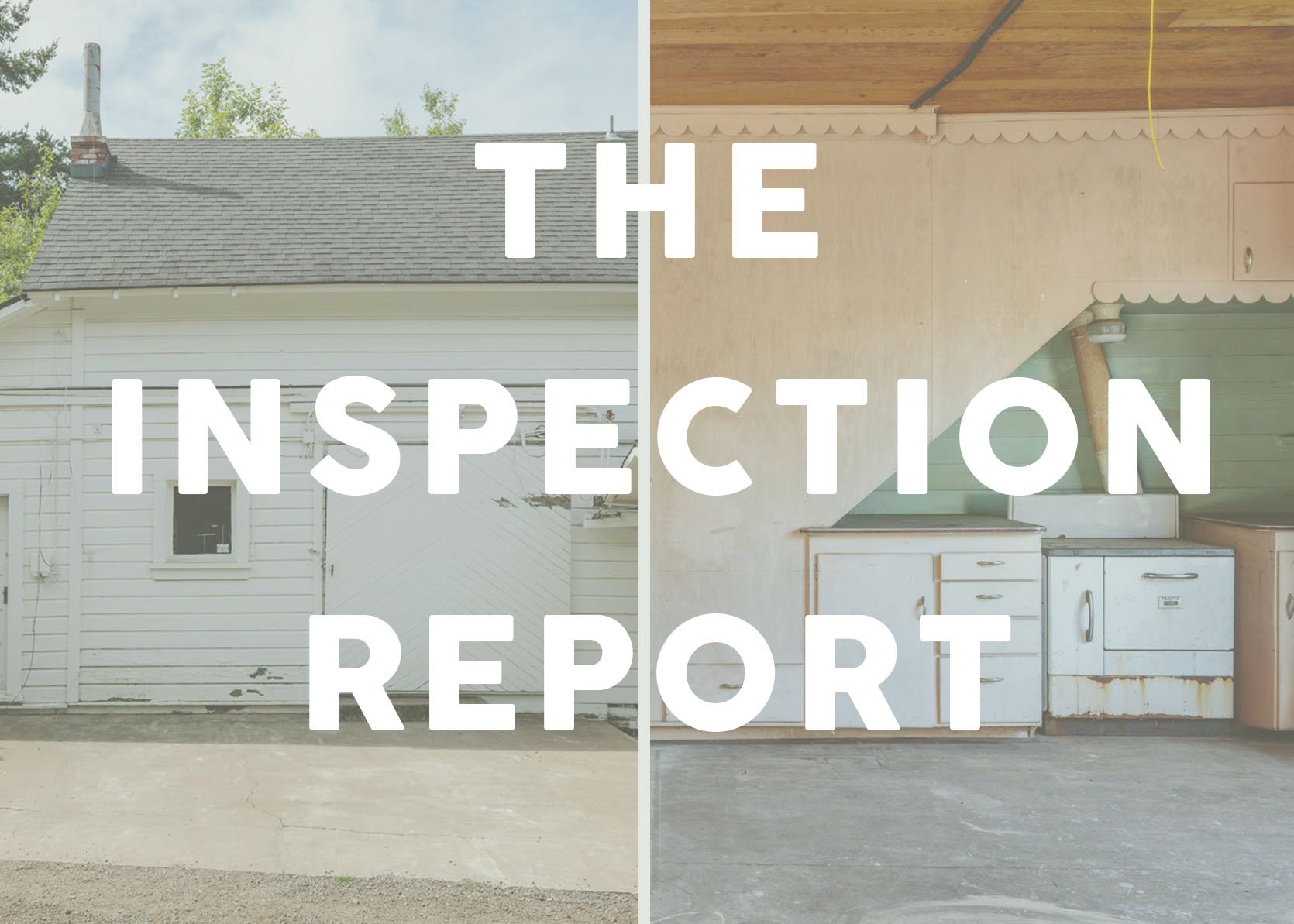
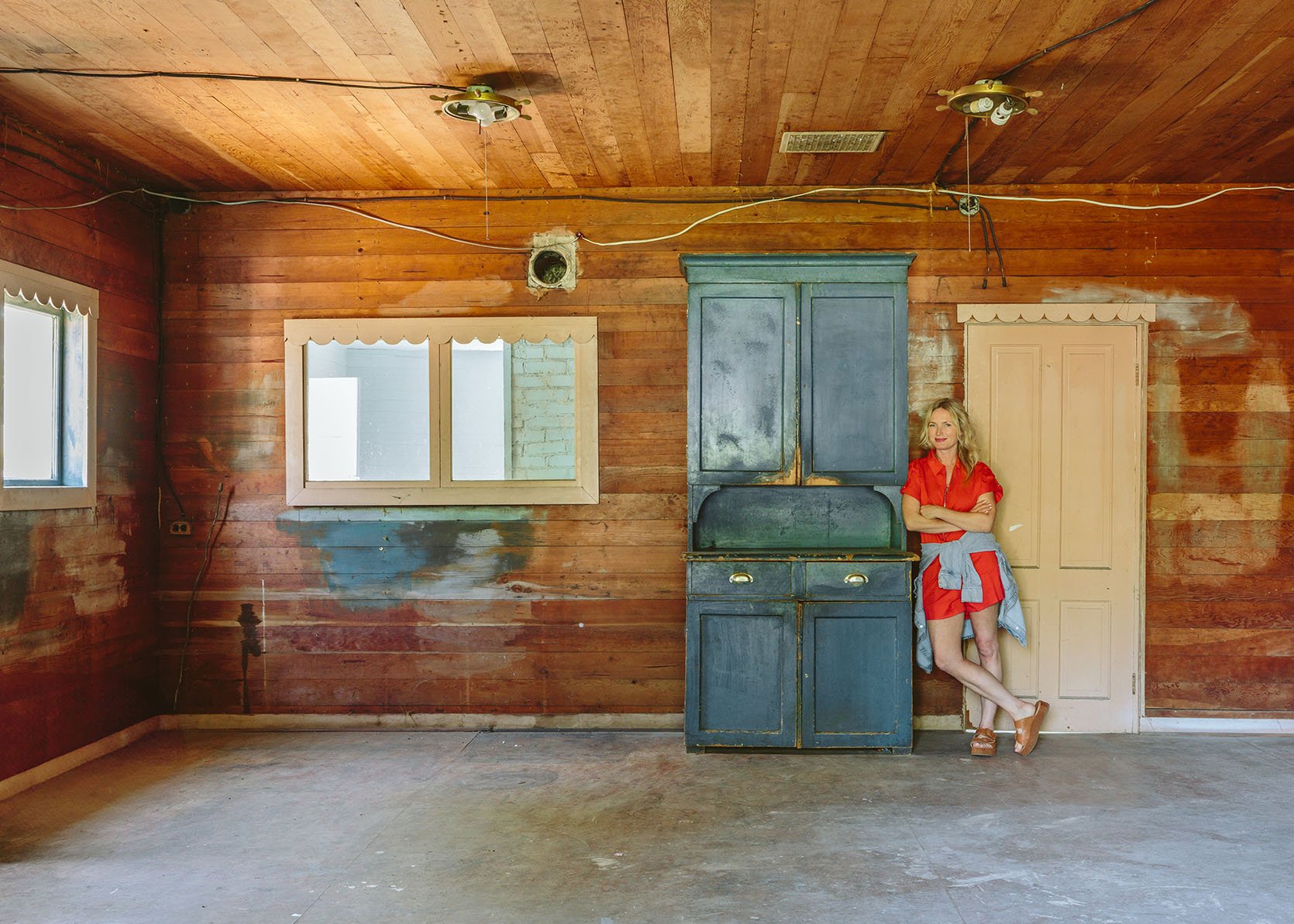
This is making me uncomfortable given everything I have unfortunately had to learn about asbestos recently. I don’t want to scare you by sharing my story but I encourage you to be really sure about what type of asbestos you have and how to treat it. We had fibrous asbestos of the worst kinds in our loft. Apparently this is unusual in residential properties. I’m in the UK and it met the criteria for having to meet proscribed standards, which meant multiple decontamination booths in my house (like something from Contagion) with decontamination showers and specialist disposal. It also was work that needed advance notification to the government. Now maybe your asbestos is a less dangerous kind and not in a friable state. I know dealing with asbestos roof tiles is much less of a big deal. But please check carefully and also check the correct PPE. It isn’t just a loose paper mask. The professionals I had used negative pressure masks, and were zipped into two layers of suits with wrists taped up. The whole nine yards. They are required to be clean shaven to improve the mask seal. I literally had no entry hazmat signs on my house!… Read more »
That’s intense!! Yah they talked us through the bad asbestos versus the stuff around the wiring that is very minimal. For our house we had a lot in the insulation and we weren’t living here at the time but I remember it being a huge thing and super expensive to professionally remove (by a remediation company). Sorry you went through that!
I had a similar experience in Italy when we had to remove an old roof panel that contained asbestos. There is a very very strict protocol, and they almost reminded me that scenes from ET.
At the time i had been told that even a minuscule particles in the lungs could bring lung diseases. Then I don’t know either if there is any difference in kinds of asbestos, but please be careful and make sure you have the proper equipment and get thorough advice.
How much would be the total for the material (including huzmut, etc) you would be using to stabilize, remove, maybe disposing, etc. ?
I’m not sure but I don’t think its a lot (we already have the masks that were $20 each). its pretty basic stuff the guy said!
My grandfather (Robert Goyer), did ground breaking research on lead in paint in St. Louis in the 1940s! Children were getting sick, so he figured out why. He went on to research other heavy metals and their public health effects (arsenic in water, mercury in fish). I feel like I’m reading about his legacy!
What a great legacy!
Both Daniel Kanter and Stacy Grinsfelder (of True Tales from Old Houses-podcast) are lead abatememt certified – maybe they have some tips or advice!
Daniel Kanter is so thorough and thoughtful! I love seeing his approach to historical restoration.
OOOH i need to reference him more often. He’s so awesome. I don’t know Stacy but ill look her up!
You too can get certified! My husband took an RRP course offered by the EPA.
Our county pays for RRP courses, so they were free for me (and Daniel). It might be free in other locations, too! The class was very useful for learning how to do a safe work area setup, how to do full and proper PPE for lead paint stripping/disturbing, and how to clean up afterwards. I felt confident to safely strip the lead paint from all our doors and door frames after the class. Tbc, they don’t cover how to do any of the actual work.
Btw, in the world of lead paint work, abatement refers to complete removal of the lead paint, whereas painting to stabilize is considered renovation. The price differences for labor are massive!
Hi Emily- one thing to consider is that doing any work with lead paint can cause lead dust which can be harmful too… we DIYed and our floors were covered with enough dust that we had to have the whole house cleaned by a professional abatement company (tests came back above safe levels). They use a deglosser to clean which meant all of my paint now has a matte sheen. We had 2 kids under 5 so this concern was heightened for us- but wanted to mention that folks may want to do lab testing after a DIY for peace of mind. Good luck with your renovation!
I think we might be relaying flooring on top as of now, also to add just another layer for insulation where needed… i’m pretty scared about dust (i mean, scared is the wrong word) but I have asthma and allergies, etc so we are planning on just scraping, priming (I am looking into the lead encapsulation paint) and painting over in the two rooms the walls are painted. REally grateful for all the wood paneling in the other two rooms (and of course the totally unfinished room that barely has walls, LOL).
Flor carpet tiles (purchased through Biscuit’s Bargains) are a great low-effort way to cover stable but aesthetically upsetting floors. Obviously not great for a wet area, but pretty terrific anywhere else.
Spray spray spray that water when you scrape! You might also consider a HEPA vacuum (sealed container, not like household vacuuum) to help clean up lead residue before a final wet cleaning (2 bucket method).
I used encapsulation paint on the surfaces that were unlikely to be disturbed, but stripped doors and the door frame where the door might touch. The encapsulation paint can be tinted like regular paint, if anyone wondered.
Great process post!
I think you contractor has minimized how much work it actually takes to properly stabilize and encapsulate lead paint. There are multiple approaches to this, and if you have significant flaking, as suggested by the photographs, encapsulation is a short term solution. I removed lead myself from twelve windows, fascia, and an overhang with chemical stripper because I knew no contractor would do as thorough of a job as I would, and it took me a solid two months wearing a n100 in 90 degree heat. It was awful and you need to prepare site cleanup everyday. The best advice and safety standards for diyers is John Leeke’s save America’s windows, but he will not advise any shortcuts.
He has a great post on “how to hire a tradesperson”. See this link:
historichomeworks.com/library/
Thank you for mentioning the N100. You must use an N100 (not N95) respirator, among other PPE. I use chemical stripper and an infrared stripper on the lead paint in my house.
ooh thank you for the tip!
Being an architect myself, I would always recommend using dcertified companies to do this kind of work and never ever advise anyone to do this kind of work themselves. I get wanting to cut costs, but for me, this area of work isn’t the one to save on. There are so many other safe DIY-options (I mean, I’d rather do the foundation myself, of course depending of the level of difficulty), that this – to me – isn’t worth the risk. Glad to hear, you’re at least not letting your team work on this. Please invest in the right equipment if you do decide to do it yourself.
I more than agree on this. This really worth two be done by professionals no matter how easy it looks or how expensive it could be. In my native language we says nothing is cheaper than the expensive one
I hear you – which is your concern? the knob and tube cutting? or the scraping and painting of the two rooms?
In my opinion it would be the lead paint, the asbestos cutting shouldn’t be too dangerous if you wear appropriate PPE depending on the state of the wiring.
tThe latter
The lead abatement, because it’s near impossible to avoid dust and that’s the part that’s dangerous. But to be honest, I wouldn’t even do the asbestos, because if you make a mistake while removing, thus damaging the knob or tubes, the asbestos fibers can be set free anyway.
I live in Europe, so it’s difficult for me to guess how much this whole renovation will cost (I assume you already have some rough numbers based on estimates), but I’m pretty sure adding this cost will not make a difference (in a way, you’re already saving anyway, since the floors don’t need to be done 😉 ).
My husband and I are renovating a house in Portland and doing pretty much the same thing – managing it ourselves, hiring subs when it makes sense, and DIYing it the rest. We have a little bit of asbestos paper on an old duct we removed and looked it up – in Portland they advise you to bag it in 4 layers of heavy duty trash bags, seal the opening with duct tape (fold it over first) and you can call the transfer station and ask if they’ll accept it. Also purchase a real deal respirator! They’re not expensive and way more secure than a disposable mask
Oh thank you! i hadn’t done the research yet but this iis so helpful! I did buy the respirators already (for cleaning – it was so incredibly dusty a few months ago). Good luck with your renovation!
We did some interior lead paint abatement ourselves a few years ago and repainted window and door frames with a special lead abatement paint. I’m not sure the brand, but it was only available in matte white, and it’s a little thicker feeling. Another anecdote I remember hearing from that project is that any paint you use to paint over existing lead paint should still be considered lead paint—even the new fresh coats can absorb the lead!
For both lead and asbestos, the biggest issue is airborn particles. I removed asbestos tiles in my laundry room by masking up, spraying the area down with water and immediately double bagging all of it in super heavy duty construction bags. Then I called my county about proper disposal. As an interior painter, good ones take a lead safety course and take proper precautions. I work in many many old houses and always assume they have lead somewhere. I just never sand old paint, if I have to scrape, I use a hepa filter vac and wash up after. Again, the main issue is breathing in dust or eating it. All painters would be out of work if we called in a lead team for every house built before the 1970s. While you do have to be aware and cautious, I don’t think a person has to spend 1000’s of dollars to address it. Best safety practices are readily available on the internet and if you follow those, should be good. I don’t let kids and pets walk through work sites but that is pretty easy to control for.
Thank you for the encouragement 🙂 its so minimal (just two rooms) and does really feel doable to me!
I’ve had a few friends – including our Rebecca – buy houses with lead paint in them recently. So I loved this little science lesson!
Ah, Rebecca 🙂 listen if were a full house of it, all over the drywall, kids being raised in it, etc you might make a different decision. But this really does feel doable for me and Brian to tackle (FAMOUS LAST WORDS).
While I don’t know that I will ever need this information, I really enjoyed this post. I hope you will continue to use this format for other projects within this series.
thank you for this feedback, seriously. hopefully traffic doesn’t tank on these process posts but I know that I find it interesting so I like doing it. but your comment is encouraging so thank you for taking the time to post it 🙂
We had a curved ceiling in our bathroom that had flaking lead paint. We used the lead encapsulation primer and it worked really really well. We didn’t sand because I didn’t want to create dust. It sort of helps glue down any loose paint (we did lightly scrape anything obvious ). Good luck! You got this!
As someone who did toxic and hazardous waste removal for 20+ years, here’s my 2¢: These projects are absolutely DIY-able, but you have to make sure that the PPE is correct. There are different kinds of hazmat suits, you want the tyvek ones, asbestos can’t get through those. Wear junk clothes underneath, if you have to get rid of them. Suits, gloves, booties. Everything gets covered so you’re not tracking asbestos anywhere else. Masks need to fit correctly. That means directly to the skin. Brian might have to shave. Make sure you have the correct filters. You want the ones specifically for asbestos, there are several different kinds. Suit up either directly outside the guest cottage, or designate a safe room in the cottage for suiting up, supplies, etc. Nothing exposed to the asbestos should come inside your house. Use fresh tyveks, gloves and filters everyday. At the end of every day, used stuff goes into a bag and is sealed up. The face masks can get washed and reused. Contact your waste disposal agency ahead of time. Asbestos and haz waste might need a special colored bag, or a special pickup. And $450 is about right for lab fees,… Read more »
Wow. All line breaks removed. Apologies for how difficult that is to read. I swear I had paragraphs when I posted it.
THANK YOU. Wow, such useful information and i’m taking all your advice. just making sure you saw its just for the knob and tube but happy to take all of these precautions even for that. REALLY appreciate all of this. thank you thank you
Seconding all of the above as a health and safety manager specifically for hazmat, including lead and asbestos handling. After a respirator fit test, you should be (or get!) familiar with doing positive and negative fit tests every time your mask comes on and off of your face if you aren’t already! Brian should definitely shave. I’d recommend a full face versus a half face respirator since it will give you 5x the protection roughly. Chemical strippers may need different respiratory protection depending on what they’re made of as well and how long of an exposure you’d be looking at.
Lab fees were very reasonable in today’s market here in the PNW!
$13k to have total lead abatement and asbestos removal done immediately, professionally, correctly, and permanently is arguably a bargain.
If it were me, I’d consider hidden costs (both literal — like supplies and the price of redoing mistakes — and metaphorical — like time, energy, anxiety, etc.).
Same thought. My time and minimizing angst and worry about it, is at least worth $13K. That IS a bargain!
What’s a “bargain” to some is not feasible for others. I redid my whole kitchen on a $14k budget, with lots of DIY and use of scrap materials. I don’t even have $13k in my bank account, and if I did, I definitely wouldn’t spend it on something I could do myself. Remember that it’s all relative – so I appreciate Emily showing us how to save money where we can!
Great news about your lino floor! Leon sounds like a keeper. We encapsulated (lead paint and questionable cutback floor adhesive) when possible, and did removal ourselves of non-friable materials in accordance with local regulations which sound intimidating, but were remarkably simple in the end. Hopefully your process will be just as smooth. One additional recommendation – construct Corsi-Rosenthal boxes and run them at all times in your work space throughout the renovation. They will greatly cut down on particulates (of all kinds) in the air. They move way more air than the average air filter.
Primer and regular paint do not encapsulate lead paint. You need encapsulating paint like Insl-X. You also can’t encapsulate horizontal or friction surfaces like floors — the friction of walking on them will just remove the encapsulation.
You’re mostly right about the risks of lead paint, but missing some detail on dust. Lead paint on friction surfaces (floors, doors, windows) generates dust as those surfaces are used.
Did you get the exterior paint and soil tested?
We have had quite a bit of lead paint and asbestos in our house. Like you, we researched (including reading the medical articles on exposure), consulted many experts, and ultimately went with a combination of hiring professional abatement and doing some of the work ourselves. Good luck to you!
Those of us in older houses might find this all more interesting than others but I personally love the nitty gritty info.
We are planning a reno of my in-home art studio (a former attached 1 car garage) in our 1939 home. When we moved in, we were told by the inspector there were asbestos tiles under the linoleum in the studio (there are a couple of spots where the lino is missing but the tile underneath is fully intact.
We were just planning on floating a new floor over all the existing flooring. BUT now I’m wondering if we should have that supposedly asbestos tile tested first.
The inspector we hired before moving in turned out to be wrong about at least 1 big ticket item (said we could just repair our aluminum siding, we could not and had to completely replace it with Hardie to the tune of $28k) and I’m pretty sure he didn’t test that flooring, just saw it and assumed it was asbestos.
So this is definitely a timely and helpful post, at least for some of us!
If your tile was 9×9, then yes, it’s pretty safe to assume it has asbestos. It’s the reason they don’t make 9×9 tile anymore! Whether there is also asbestos in the mastic is more of a toss up. I’d be surprised if your inspector didn’t put in some qualifier, like that it was ‘probable’ that it contained asbestos, because yes, you can’t tell anything for sure unless you test.
This is a great topic and after remodeling over 60 homes, most of them older, I completely agree with the route Emily has taken. My additonal note – when paint is particularly flaky, after scraping and prior to priming I would use Peel-Stop primer as the base. I have used many times with excellent results on both interior and exterior surfaces
Lead poisoning is a huge problem in my city. For peace of mind you might want to get bloodwork done for your kids (or yourselves) to get a baseline. As one poster noted, most problems occur with surfaces that wear away the paint with regular use. My kids were not sucking on window sills but the dust alone was enough. For my two neighbors it was the porch. I tell every new parent to test their kids and test their home.
Yes! When they were very small, my kids’ levels became elevated due to playing in the dirt from our garden. We got a sandbox for them to play in, covered all exposed soil, and instituted mandatory, extensive handwashing and clothing changes back then.
I’m sure this is very old news to everyone, but AMERICA IS WRAPPED IN MILES OF TOXIC LEAD CABLES
Telecom companies laid them decades ago and thousands were left behind, posing a hidden health hazard today, a WSJ investigation found.
wsj.com/business/telecom/lead-cables-telecoms-att-toxic-5b34408b
The Wall Street Journal about lead contamination from cables (including the Willamette River)
pureearth.org/wp-content/uploads/2023/07/WSJ-Lead-Cables-story.pdf
I am a health and well-being designer, evidence-based design certified, took coursework with Parsons from their Healthy Materials Lab etc. I’ve overseen lead abatement via contractor and I’ve seen asbestos removal done wrong, contaminating an entire neighborhood. I’ve also run 100+ clinical trials at large academic medical institutions. I am published in medical journals. I’ve worked with 1,000+ people with cancer. And I’ve been treated for cancer. Let me assure you that no amount of PPE is going to make you feel safe about removing carcinogens that will disperse in the air, settle into wood cracks, etc. that you and your family can breathe, swallow, touch etc. Even if it’s just encapsulation of old lead paint. (And by the way there is *no* safe level of lead paint. Even if you’re just a little above the “recommended” limit, that’s dangerous). If you’ve never had a breast removed, radiation, additional therapies for cancer and 100 medical visits necessitating that you need to go on hiatus from work- find someone who has. Then spend the extra money so that a company with the appropriate EPA certifications can do the remediation with the proper precautions so that you never have to wonder if… Read more »
I am most impressed by your ability to ask good questions to find your options! Whenever I get info from a professional about something in my world that I have no clue about, I need a while for the info to sink in and percolate, become less personal, before I even begin to have responses and intelligent, useful questions! This is quite annoying for all when it comes to doctors for example. Sounds like you are really getting a handle on the state of your place (and so glad for the teaser that the foundation issue isn’t as dire as you once thought).
You’ve got this!
One thing I learned before renovating my 100-yr old house last year and haven’t seen mentioned in the comments is to plan to have the property tested for lead again after you complete the project. To confirm that there’s no lingering lead in the environment. I don’t know if this recommendation also applies to asbestos – it may be worth asking.
oh wow, is knob and tube always asbestosy?
Cautionary tale: After we had professionals do lead abatement (scraping, removal of paint) and renovation of our not yet occupied 1930’s home, the entire house was covered in invisible, dangerous levels of lead dust. I was so lucky that I had lead dust clearance testing done by an environmental company after the abatement, before allowing my small children to move into the house. I thought the testing was a formality and did not think it would come back with high levels of lead dust. We got it all cleaned up to a safe level, but it was no easy feat.
Portland real estate agent here 👋🏼 I’ve got a fabulous foundation contractor recommendation if you need one more opinion. They’re honest, non-alarmist, earnest problem solvers (especially when it comes to older / historic homes) and always very competitive with competing bids. I’ve also got a rec for one of the best residential structural engineers in the city (if necessary), who this foundation contractor works closely with. She’s the best, and a wealth of knowledge + experience. In lieu of a costly formal writeup, you can pay for an informal walk-and-talk where she will evaluate the site and explain her observations and possible solutions. This has always been a valuable resource for my clients.
Love these process posts! I’d recommend getting a paid consultation with Stacy Grinsfelder of Blake Hill House. She teaches historic window restoration, which includes lead abatement. I took her in-person class this summer and it was hugely informative and helpful. She can tell you all sorts of practical things, like which vacuums and air filters to use — turns out HEPA filters are not sufficient but she can tell you which filters and vacuums are!
She’s great, I really like her True Tales from Old Houses podcast. I’d love to take an in-person window restoration class with her!!
Agreed, I’d love to see a (paid!) guest post by her and/or Daniel Kanter.
Super interesting! Thanks for sharing your process. I’m curious, have you done the numbers on your labor and added that to the DIY cost totals? This is something I’ve been working on thinking through more for myself when I am deciding whether to DIY something (in my case usually craft and kid related) versus buy it. How many hours will I be spending on it and what is the dollar value on my labor for those hours? Sometimes that really changes my mental calculus on whether I’m saving enough to make the DIY worth it. Whatever way you go with it all I look forward to following along here on the blog!
Not boring at all! I love seeing these process posts. It’s always amazing when multiple qualified/recommended contractors end up giving such different approaches and quotes.
Look forward to following along!
I don’t know anything about asbestos abatement, but for lead paint removal, you should be completely fine with proper PPE. Lead dust is serious stuff, but I think that in the case of adults (not children, pregnant people or pets, which people often forget), the risks have become a bit overblown. The research I’ve read all suggests that the main reductions in population-level lead poisoning are driven largely by the elimination of lead in gasoline.
The main thing to keep in mind for your project is that you want to scrape or use chemical strippers (messier), not sand. There’s a device called the ProScraper, which you can attach to a HEPA vac, and it works fabulously well and there’s minimal mess.
Scott Sidler wrote a quick summary of the lead situation if you are interested. Since your site doesn’t allow links, google:
The Craftsman Blog – Lead Paint: The Whole Story
Oh! I don’t think anyone has mentioned that you should be careful about vaporizing lead as well worrying about dust. A mask won’t help you in that scenario. So don’t use a heat gun. Infrared heaters are good as well.
Just had a bathroom remodeled and a flooring retailer/installer said to be sure our contractor tested the old flooring adhesive, not just the old flooring, for asbestos. He said they have found old adhesive to be more of a problem in older Portland homes than the flooring itself.
I can’t speak to the asbestos (we had a bit of knob & tube and questionable linoleum in the basement that regular contractors removed before it occurred to me that I should have pursued abatement) but LEAD PAINT I can speak to. I stripped seeming miles of lead paint in our former 1906 foursquare, single-handedly, with kids in the house. It was stressful. I was paranoid. It was doable though. First, I had baselines on blood lead levels taken at the doc, and again later, to ensure nothing bad was happening (everyone was fine). Second, the method of removal. Heat guns and sanding/scraping were out. The former can vaporize the lead, risking it going airborne, plus I was afraid of scorching the very oak I was trying to restore. And of course the latter does exactly what you DON’T want it to do — breaks it into a bazillion tiny particles to float around and settle into every crevice (or the nearby soil). My chosen method was gel paint stripper, not the horrible old stinky stuff (methylene chloride) that makes you pass out, but the newer ones that were a bazillion times less toxic-smelling: Soy Gel and then later, my… Read more »
Heads-up:
Just disposing of the bags of trash/PPE/associated junk that comes with lead abatement is an enormous task. I live in Texas, where it’s pretty much a free-for-all when it comes to hazardous materials, and lead abatement was a beast of a job in my last house. The hard part wasn’t the work–it was figuring out how and where to get rid of the trash.
Because everything is contaminated. And you have to be very careful not to spread that contamination around. PPE is hot and confining, and so many details (like sticky mats) need to be considered.
When having their old house covered in lead paint repainted, my SIL (a dietician who works in cancer research) had all her kids drink lots of orange juice – the vitamin C (especially in conjunction with calcium and iron) helps reduce your body’s absorption of lead. Pretty easy way to add a little more protection!